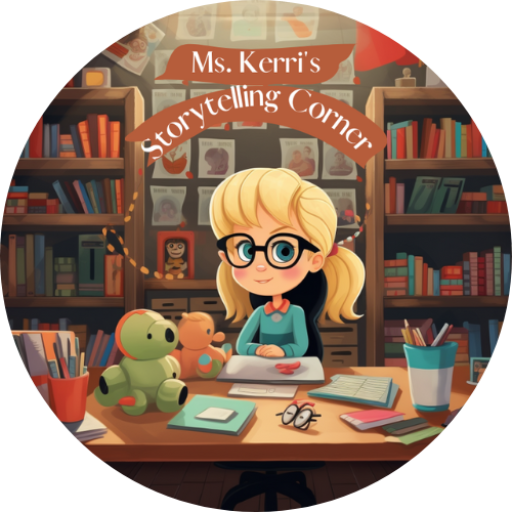
Reading is a wonderful way to ignite a love of books in people of all ages. Whether you’re a parent looking to inspire your child or an adult seeking to develop a reading habit, there are simple storytime essentials that can make the experience enjoyable and engaging. In this article, we will explore the key factors to consider when choosing books, creating a cozy reading environment, making reading fun and interactive, establishing a reading routine, and expanding the reading experience. By implementing these strategies, you can create a positive and enriching reading experience that will foster a lifelong love of books.
Key Takeaways
- Understanding your child’s interests can help you choose books that will captivate and engage them.
- Exploring different genres exposes readers to a variety of writing styles and storytelling techniques.
- Consider age-appropriate content to ensure that the books are suitable for the reader’s developmental stage.
- Creating a designated reading nook with soft lighting and comfortable seating can enhance the reading experience.
- Adding personal touches, such as blankets or pillows, can make the reading environment cozy and inviting.
Choosing the Right Books

Understanding Your Child’s Interests
When it comes to choosing books for your child, it’s important to understand their interests and preferences. BoldBy selecting books that align with their passions, you can ignite their love for reading and make it a truly enjoyable experience.
One way to discover your child’s interests is by observing their playtime activities. Pay attention to the toys they gravitate towards and the stories they create. This can give you valuable insights into the themes and topics that capture their imagination.
Additionally, engage in conversations with your child about their favorite characters, hobbies, and activities. This will not only help you understand their interests but also strengthen your bond with them.
To further enhance their reading experience, consider the following tips:
- BoldIntroduce books that feature their favorite animals, sports, or hobbies.
- ItalicsExplore different genres to expose them to a variety of storytelling styles and themes.
- Look for books that are age-appropriate and align with their developmental stage.
Remember, understanding your child’s interests is the key to selecting books that will captivate their attention and foster a lifelong love of reading.
Exploring Different Genres
When it comes to reading, it’s important to expose children to a variety of genres and formats of books. Introduce them to different types of stories, from adventure and mystery to fantasy and science fiction. By exploring different genres, children can discover their personal preferences and develop a love for reading. Utilize book recommendation resources to find books that align with your child’s interests and age-appropriate content. Make reading interactive by using props and puppets to bring the stories to life. This not only engages children but also enhances their understanding and enjoyment of the book. Creating a cozy and well-lit reading environment is also crucial. Designate a special reading nook where your child can feel comfortable and relaxed. Use soft lighting and provide comfortable seating to make the reading experience even more enjoyable. By understanding your child’s interests and preferences, you can select books that resonate with them and spark their curiosity. Explore various genres and formats to keep the reading experience exciting and diverse. Reading not only fosters imagination and creativity but also enhances communication skills and personal growth.
Considering Age-Appropriate Content
Selecting age-appropriate books is crucial for children’s reading development. Tailoring the reading experience fosters comprehension, engagement, and a love for reading. It also allows children to explore culture and tradition at their own pace. When choosing books for your child, keep their age and reading level in mind. Matching the content to their developmental stage ensures they can understand and connect with the story. It’s important to strike a balance between challenging them and providing a sense of accomplishment. Introducing new concepts and vocabulary can expand their knowledge and language skills. Additionally, age-appropriate content helps children feel relatable characters and situations, making the reading experience more enjoyable and meaningful.
Creating a Cozy Reading Environment

Designating a Reading Nook
Creating a cozy reading nook is an essential step in igniting a love of books at any age. Having a dedicated space for reading not only provides a sense of comfort and security, but it also helps to establish a routine and make reading a special activity. Designating a specific area in your home as a reading nook can be as simple as setting up a comfortable chair or bean bag in a quiet corner. You can also add soft lighting and personal touches like cushions or a favorite blanket to create a cozy atmosphere. By creating a designated reading nook, you are sending a clear message that reading is important and valued in your home.
Using Soft Lighting and Comfortable Seating
Creating a cozy reading nook is a wonderful way to enhance your child’s reading experience. By designating a special space for reading, you can create a sense of comfort and relaxation that will make reading even more enjoyable. Soft lighting is key to creating a cozy atmosphere. Consider using warm, dim lighting that is gentle on the eyes and promotes a calm and peaceful environment. This can be achieved through the use of table lamps, string lights, or even candles (with adult supervision, of course!).
Comfortable seating is another important aspect of a cozy reading nook. Choose seating options that are soft and inviting, such as plush cushions, bean bags, or a comfy armchair. The goal is to provide a comfortable space where your child can relax and fully immerse themselves in the story.
To make the reading nook even more special, consider adding personal touches. Decorate the space with your child’s favorite books, stuffed animals, or artwork. This will create a sense of ownership and make the reading nook feel like their own special retreat.
Adding Personal Touches
When it comes to creating a cozy reading environment, adding personal touches can make all the difference. Design a cozy reading nook with comfortable seating, good lighting, and a variety of books. This dedicated space will entice your child to curl up with a book and get lost in the magic of storytelling.
To make the reading experience even more engaging, use expressive voices for characters, ask open-ended questions, and encourage predictions. This interactive approach will not only captivate your child’s imagination but also foster critical thinking skills.
After reading, take the opportunity to discuss real-life connections. This helps your child relate the story to their own experiences and develop a deeper understanding of the world around them.
Looking for additional resources? Check out Ms. Kerri’s Story-telling Corner and PBS Kids, which offer educational materials and activities to enhance the reading experience.
Lastly, make story time a daily dedication. By setting aside a specific time each day for reading, you create a routine that strengthens language and cognitive functioning.
Making Reading Fun and Interactive

Engaging in Storytelling
Engaging storytelling is key to capturing the attention of young readers. It is an opportunity to transport them to different worlds, ignite their imagination, and foster a love for books. To make storytelling interactive and enjoyable, parents can incorporate the following strategies:
- Choose books that match your child’s interests: Whether they are fascinated by dinosaurs, princesses, or outer space, finding books that align with their interests will keep them engaged and eager to hear more.
- Create a cozy reading environment: Set the stage for storytelling by creating a comfortable and inviting space. Use soft lighting, cozy seating, and add personal touches like pillows or blankets to make it extra special.
- Use expressive voices and gestures: Bring the story to life by using different voices for characters and incorporating gestures. This adds excitement and helps children connect with the story on a deeper level.
- Encourage active participation: Get your child involved in the storytelling process. Ask them questions, encourage them to predict what will happen next, and let them contribute their own ideas and interpretations.
- Make storytelling a regular part of your routine: Set aside dedicated time for storytelling every day or week. This consistency helps create a sense of anticipation and makes storytelling a cherished ritual.
Engaging in storytelling not only enhances the reading experience but also strengthens the bond between parent and child. It is a wonderful way to create lasting memories and ignite a lifelong love of books.
Using Props and Visual Aids
Props and visual aids can greatly enhance the reading experience for children. Interactive read-alouds for kids make reading fun and engaging. Strategies include asking open-ended questions, involving children in the storytelling process, using props and visual aids, incorporating movement and sound effects, and utilizing interactive read-aloud resources. These techniques not only capture children’s attention but also help them understand and connect with the story on a deeper level.
Incorporating props and visual aids can stimulate children’s imagination and creativity. For example, using puppets or stuffed animals can bring characters to life and make the story more interactive. Visual aids such as illustrations, diagrams, or maps can provide visual support and help children visualize the story’s setting or plot. By engaging multiple senses, props and visual aids create a multisensory reading experience that enhances comprehension and enjoyment.
Additionally, props and visual aids can be used to reinforce key concepts or themes in the story. For instance, if the story is about animals, using animal figurines or pictures can help children learn about different species and their characteristics. Props and visual aids can also be used to introduce new vocabulary words or reinforce existing ones. By associating words with tangible objects, children can better understand and remember the meaning of the words.
In summary, incorporating props and visual aids in storytelling can make the reading experience more interactive, engaging, and educational. It stimulates children’s imagination, enhances comprehension, and reinforces key concepts. So, don’t hesitate to grab some props and get creative with visual aids to ignite a love of books in children of all ages.
Encouraging Participation
Encouraging children to actively participate in the reading experience can greatly enhance their enjoyment and understanding of the story. Here are some strategies to get your child engaged:
Establishing a Reading Routine

Setting a Regular Reading Time
Establishing a consistent reading routine is key to fostering a love of books in children of all ages. By setting aside dedicated time for reading, you create a special space for your child to engage with stories and develop their literacy skills. Here are some tips to help you establish a regular reading time:
- Choose a time that works for your family: Find a time of day when everyone is available and can commit to the reading session. It could be before bedtime, after dinner, or even during a quiet afternoon.
- Create a cozy reading environment: Make sure the reading area is comfortable and inviting. Set up a designated reading nook with soft pillows, blankets, and a cozy chair or bean bag.
- Eliminate distractions: Minimize distractions during reading time by turning off the TV, putting away electronic devices, and creating a quiet atmosphere.
- Make it a daily habit: Consistency is key. Aim to read together every day, even if it’s just for a few minutes. This helps establish reading as a regular part of your child’s routine.
- Encourage active participation: Engage your child in the reading experience by asking questions, discussing the story, and encouraging them to make predictions or connections.
Remember, setting a regular reading time not only helps your child develop a love for books but also creates a special bonding experience between you and your child.
Incorporating Books into Daily Activities
Incorporating books into daily activities is a fantastic way to make reading a seamless part of your child’s routine. By integrating read alouds into a regular schedule, you not only expose your child to a variety of stories and vocabulary, but you also help them develop important reading skills and anticipation for stories. Reading together as a family creates a reading community, promoting reading as a social activity and fostering a love for books. Whether it’s during mealtime, bath time, or bedtime, finding moments throughout the day to share a book with your child can create lasting memories and strengthen your bond. Nurturing your child’s imaginative mind through storytelling unlocks boundless potential and sparks their creativity.
Making Reading a Family Affair
Reading is not just an individual activity, but a wonderful opportunity to bring the whole family together. By involving everyone in the reading experience, you can create lasting memories and foster a love of books in your children. Here are some ways to make reading a family affair:
- Establish a consistent reading schedule: Set aside a specific time each day or week for family reading. This regular routine will help make reading a priority and ensure that everyone has dedicated time for books.
- Integrate books into other activities: Incorporate books into other family activities, such as picnics, road trips, or even cooking. This will show your children that reading is not just limited to a specific time or place, but can be enjoyed anywhere.
- Choose age-appropriate books: Select books that are suitable for different age groups within your family. This will ensure that everyone can participate and engage with the story at their own level.
- Create a reading-friendly environment: Designate a cozy reading nook in your home where the whole family can gather. Use soft lighting, comfortable seating, and add personal touches like pillows or blankets to make it inviting.
- Encourage discussion and sharing: After reading a book together, encourage everyone to share their thoughts and opinions. This will not only deepen their understanding of the story but also promote communication and critical thinking skills.
- Make it a special event: Turn reading into a special event by hosting a family book club or organizing themed reading nights. This will create excitement and anticipation around reading, making it a fun and memorable experience for everyone.
Remember, the goal is to make reading a shared activity that brings joy and connection to the whole family. So get everyone involved and start creating your own reading traditions today!
Expanding the Reading Experience

Visiting the Library
Visiting the library is a great way to expose your child to a wide variety of books and expand their reading horizons. Exploring the shelves and discovering new titles can be an exciting adventure for both children and parents. It’s also an opportunity to teach your child about the importance of libraries and how they can access a world of knowledge and imagination through books. Encourage your child to choose books that capture their interest and challenge their reading skills. Whether it’s a picture book, a chapter book, or a non-fiction book, the library has something for every young reader.
When visiting the library, take advantage of the resources and services available. Ask the librarian for recommendations based on your child’s age, interests, and reading level. Librarians are knowledgeable and passionate about children’s literature and can help you find books that are both engaging and educational. Attend library events and programs such as storytime sessions or book clubs. These activities not only make reading more fun and interactive but also provide opportunities for your child to socialize with other young readers.
In addition to borrowing books, many libraries offer other materials and resources that can enhance your child’s reading experience. Explore the audiovisual section for audiobooks or DVDs of children’s movies based on books. These can be a great way to introduce your child to different storytelling formats and enhance their listening and comprehension skills. Some libraries also have digital resources, such as e-books and online databases, which allow your child to access books and information from the comfort of home.
Visiting the library regularly can instill a love of reading in your child and foster a lifelong habit of learning. Make it a family outing and involve everyone in the process of choosing books and exploring the library. By creating positive associations with the library, you are not only nurturing your child’s love of books but also creating lasting memories and bonding experiences as a family.
Attending Book Events and Storytelling Sessions
Attending book events and storytelling sessions can be a fantastic way to further ignite your child’s love for books. These events provide an opportunity for children to engage with authors, illustrators, and other book enthusiasts, allowing them to see the magic behind the stories they love. Meeting their favorite authors in person can be an incredibly exciting experience for young readers, as it brings the characters and worlds they adore to life.
Additionally, book events and storytelling sessions often include interactive elements that make the reading experience even more enjoyable. Participating in storytelling activities and listening to captivating readings can captivate your child’s imagination and inspire them to explore new books and stories.
Attending these events also allows children to connect with other book lovers and share their enthusiasm for reading. Interacting with fellow readers can create a sense of community and encourage children to discuss their favorite books, characters, and plot twists. It’s a wonderful opportunity for them to broaden their reading horizons and discover new recommendations from their peers.
Joining a Book Club or Reading Group
Joining a book club or reading group can be a fantastic way to enhance your reading experience and connect with other book lovers. By joining a book club, you can engage in stimulating discussions, gain new perspectives, and discover books that you may not have come across on your own. It’s a great opportunity to broaden your literary horizons and delve into genres and authors that you may not have considered before. Being part of a book club also provides a sense of community and camaraderie, as you share your thoughts, opinions, and recommendations with fellow readers.
Welcome to Ms. Kerri’s Story Telling Corner, where we believe in expanding the reading experience for children of all ages. Our website is dedicated to providing a wide range of captivating stories, interactive activities, and educational resources that will ignite your child’s imagination and foster a love for reading. Whether your child is just starting their reading journey or is already a bookworm, our goal is to create a magical and engaging experience that will keep them coming back for more. Visit our website today and embark on a literary adventure with Ms. Kerri!
In Conclusion
Storytime is a magical experience that can ignite a love of books at any age. By incorporating these simple essentials into your storytelling routine, you can create a captivating and engaging environment for readers of all ages. Remember to choose books that are age-appropriate and explore a variety of genres to keep the excitement alive. Don’t forget to use expressive voices, gestures, and props to bring the stories to life. And most importantly, have fun! Immerse yourself in the world of storytelling and watch as the love for books blossoms in the hearts of your audience. So gather around, grab a book, and let the adventure begin!
Frequently Asked Questions
How do I choose the right books for my child?
When choosing books for your child, it’s important to understand their interests, explore different genres, and consider age-appropriate content. By taking these factors into account, you can find books that will capture their attention and ignite a love of reading.
What can I do to create a cozy reading environment?
To create a cozy reading environment, you can designate a reading nook, use soft lighting and comfortable seating, and add personal touches such as pillows or blankets. These elements can enhance the reading experience and make it more enjoyable for your child.
How can I make reading fun and interactive?
To make reading fun and interactive, you can engage in storytelling by using different voices and expressions, use props and visual aids to bring the story to life, and encourage participation by asking questions or acting out parts of the story. These activities can make reading a more engaging and immersive experience.
Why is it important to establish a reading routine?
Establishing a reading routine helps create a habit of reading and makes it a regular part of your child’s day. By setting a regular reading time, incorporating books into daily activities, and making reading a family affair, you can instill a love of books and make reading a cherished activity.
How can I expand the reading experience?
To expand the reading experience, you can visit the library to discover new books, attend book events and storytelling sessions to engage with authors and other readers, and join a book club or reading group to discuss books and share recommendations. These activities can broaden your child’s reading horizons and foster a sense of community.
What are some age-appropriate books for different age groups?
For toddlers and preschoolers, board books and picture books with simple stories and colorful illustrations are recommended. For elementary school children, chapter books and middle-grade novels can provide more complex narratives. For teenagers, young adult books with relatable themes and characters are suitable. It’s important to consider the reading level and interests of each age group when selecting books.

Ms. Kerri’s Corner provides a exciting virtual space for preschool learning. Through a variety of engaging activities, she exposes young minds to early math, literacy, science and social-emotional skills in a developmentally appropriate way. Centers for blocks, art, books and music allow children to explore hands-on learning at their own pace. Guided lessons subtly introduce number sense, letter sounds and narrative thinking. Careful observation gives insight into each child’s progress across domains. Viewers are also invited to participate, reinforcing that their ideas are valued. By making learning fun yet purposeful, Ms. Kerri lays the groundwork for future academic success while fostering creativity and imagination. Her program offers preschoolers valuable screen-based learning experiences.








